The subject of creative freedom is something I have thought about most of my adult life. Reading A Room Of One’s Own, by Virgina Woolf was pivital for me; I first read it in the early 2000’s. It was one of the books that made me dive deep into what I and other women creatives do, and why. I drew this around that time.
Woolf’s essay— published in 1929 and based on a series of lectures she delivered at two women’s colleges in Cambridge— argued that women need space and money to create. In her time, most women did not have their own rooms for creating (other than perhaps kitchens and sewing rooms), nor did many of them control the money in their homes. She meant space literally, and I believe figuratively. Creativity requires an ability to shut out distractions that do not let you find your true thinking and your pure creativity. Our culture is good at distracting us, such that we don’t know who we are. We need to listen to our minds.
That’s been my fascination, and the motivation behind researching cartoonists and humorists who are women. How can they block out the noise (which is often sexist, misogynistic and racist) and speak about what they want to say? Humor is very dependant on the culture, and it has to be understood by others in order to “work.”
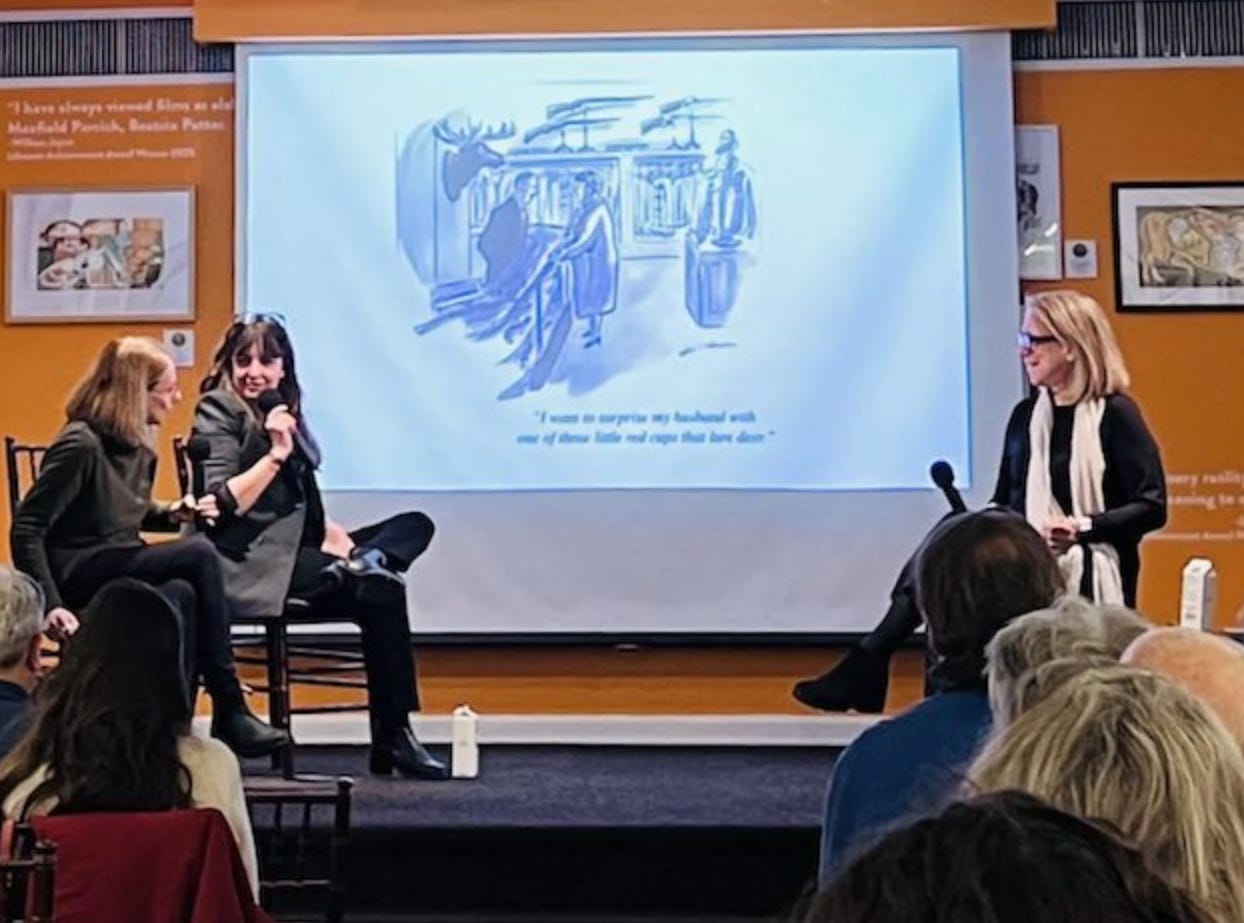
Two nights ago, there was an opening of an exhibition which I curated for The Society of Illustrators in NYC, called “From Lines To Laughs: Women+ On Men.” The show included cartoon art from 23 artists who identify as women or non-binary, and whose work was published in The New Yorker. It was a wonderful event, with eight of us in attendance. Here we are in the gallery where the work was displayed.

The event was sold out. I arranged to have a panel discussion with New Yorker cartoonist Roz Chast, and cartoon editor Emma Allen, moderated by me. I showed slides of the art from the show and more, including cartoons by women from the 1920’s and 30’s. Much has changed, but much has not; we talked about that as well.
The panel was unlike any panel I have moderated, and I have moderated both Roz and Emma. At one point we disolved into a fit of laugh-crying about something. As we looked through all the slides of the poignant and funny art, we did get serious at times, and touched on the power of humor to see, the wonderfulness of this art form. And that while things are better, we still need to hear more from women+.
For me, one of the best parts of the night was at the end, when I received a gift from Emily Flake’s (one of the cartoonists in the show) daughter. Augustine looks like she’s the same age I was when I started drawing cartoons. She had drawn me while watching the panel.
This is what it’s about, right? That night, we women artists were gathering and talking and celebrating that we can do this; Augustine was watching and hopefully felt encouraged. I know her mother Emily is doing that all the time, too. With this drawing from Augustine, it came full circle for me.
Thank you to Director Arabelle Liepold and the staff of the Society for believing in the idea that women need to be showcased still.

My husband, New Yorker cartoonist Michael Maslin, wrote a lovely piece about the show. Thank you, Michael!
Here is a gallery of photos from the night. Thank you to Dr. Stephen Nadler, Judith Mizrachy and the Society for many of these photos.
Enjoy! If you are in NYC, the show is up until March 2.

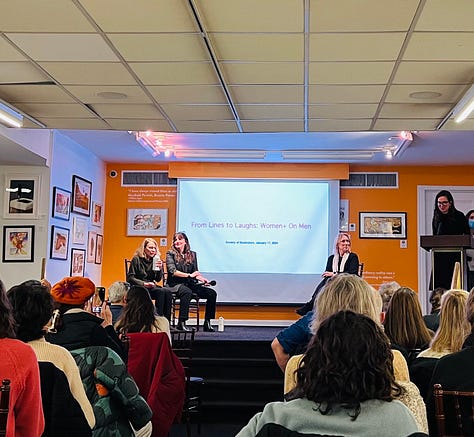
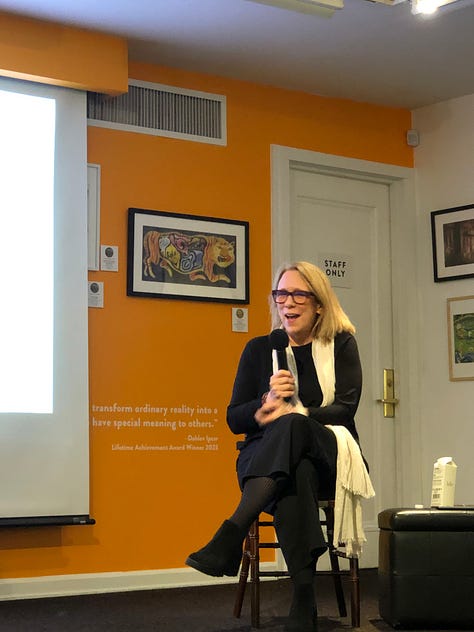
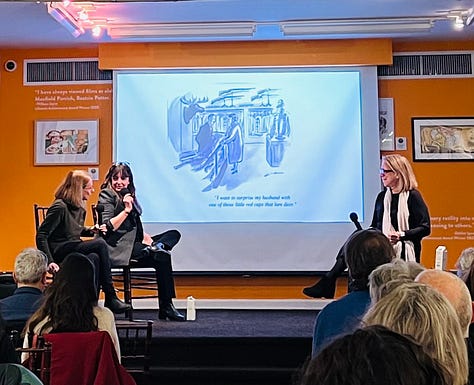

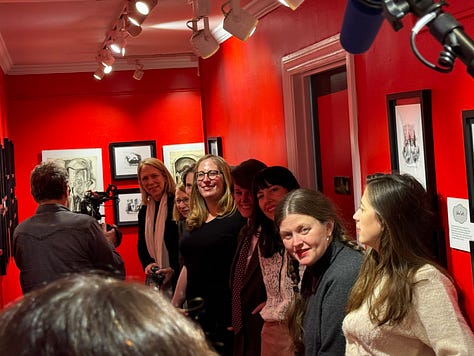

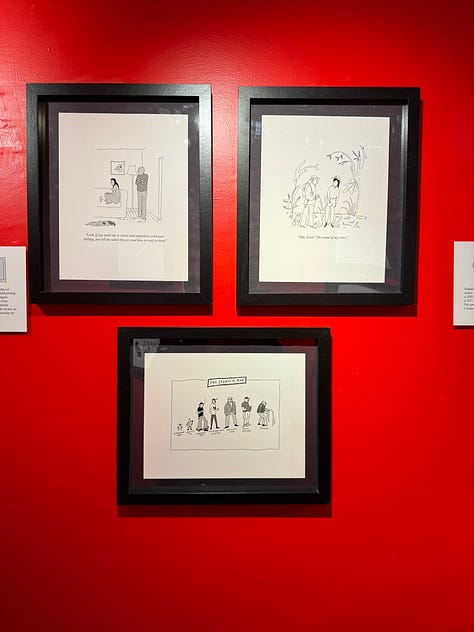
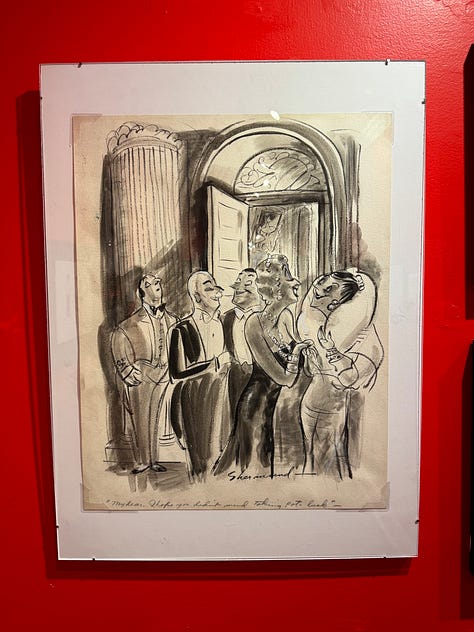
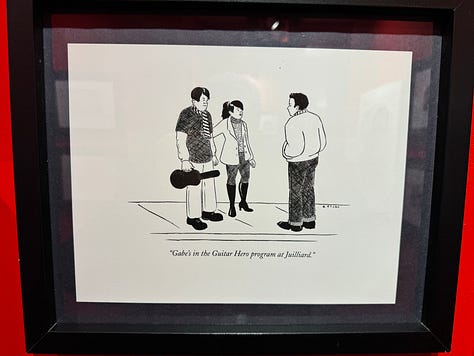

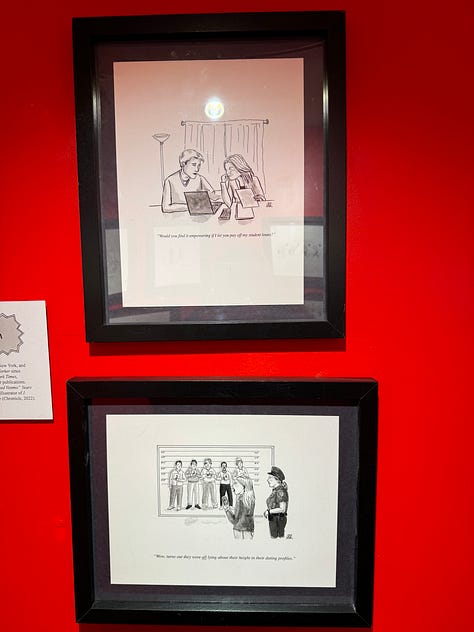
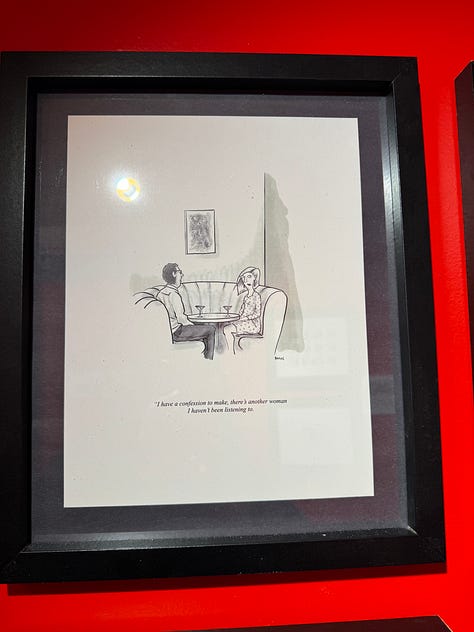
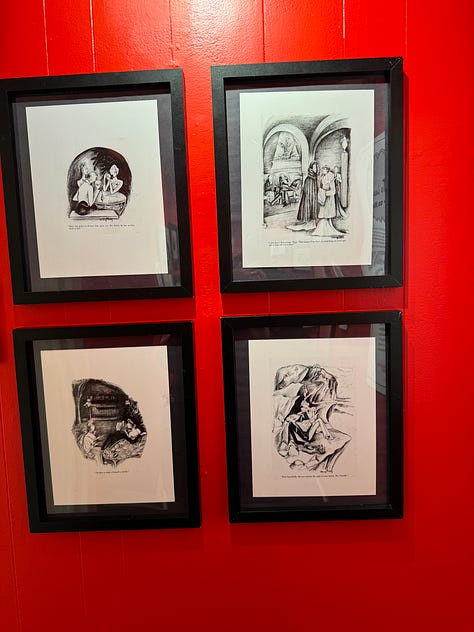
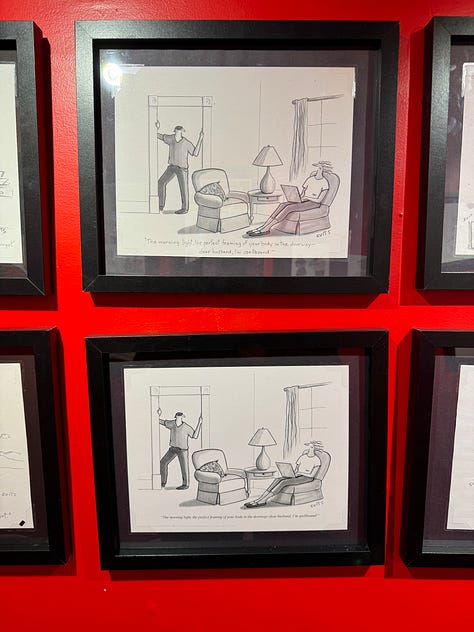
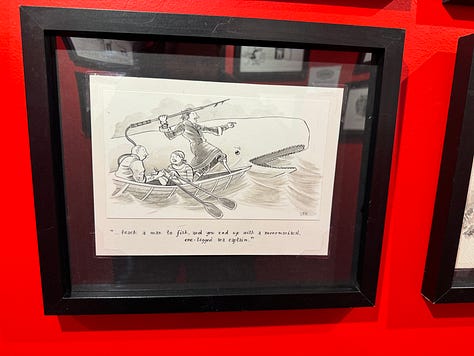
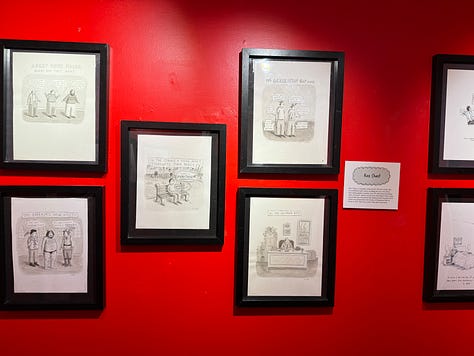
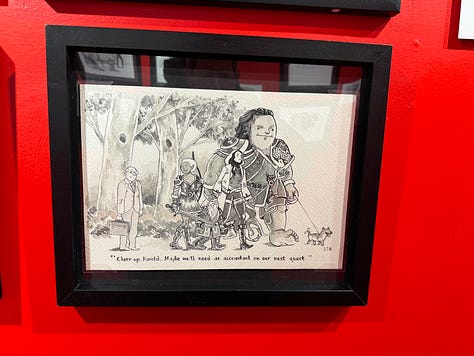
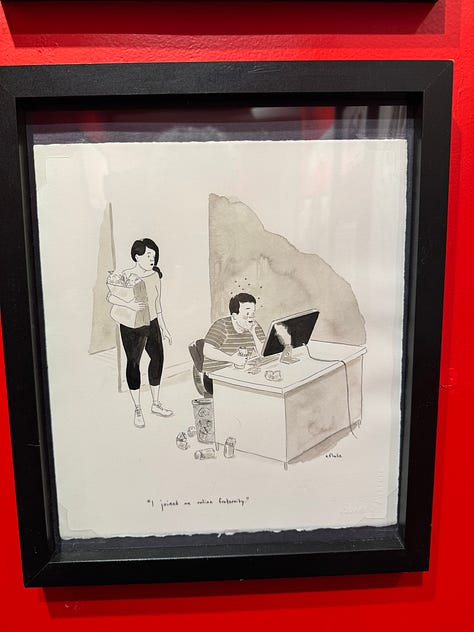
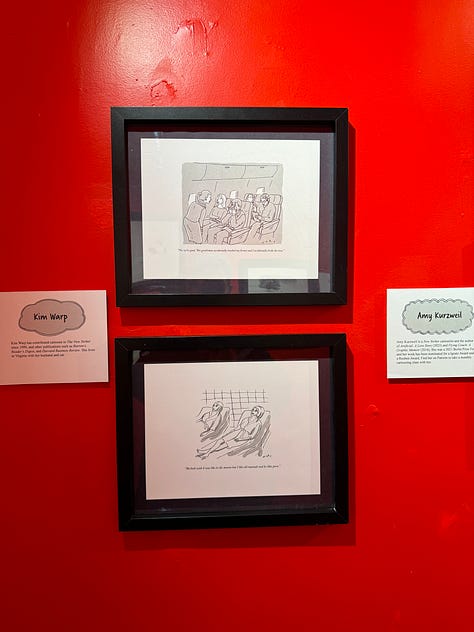
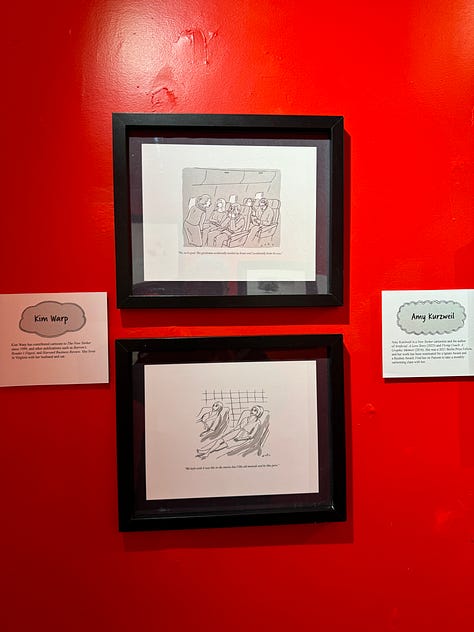
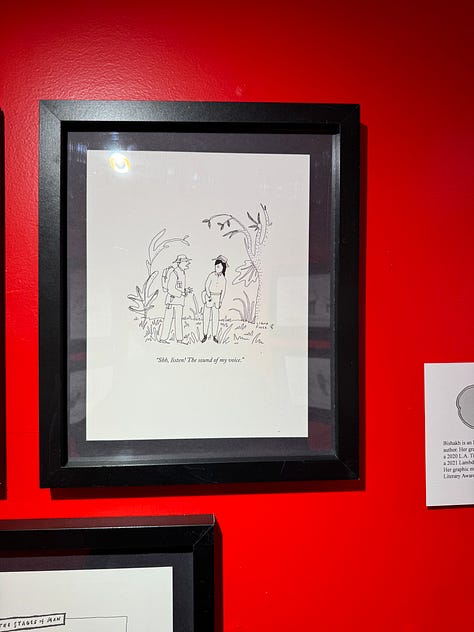
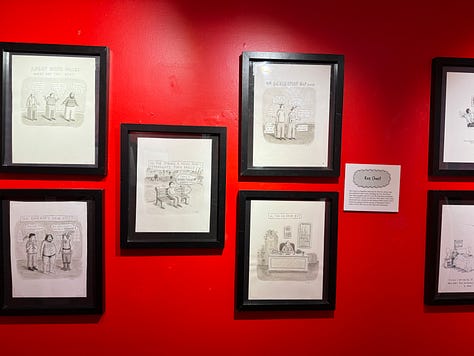
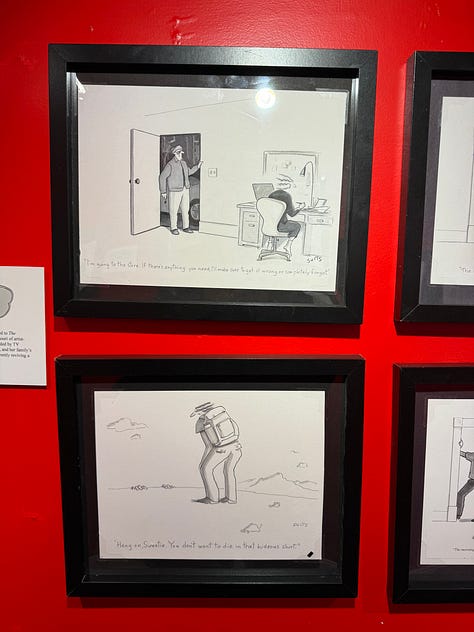


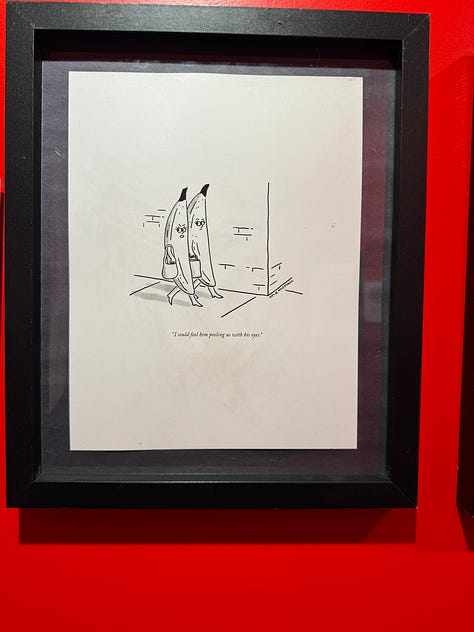
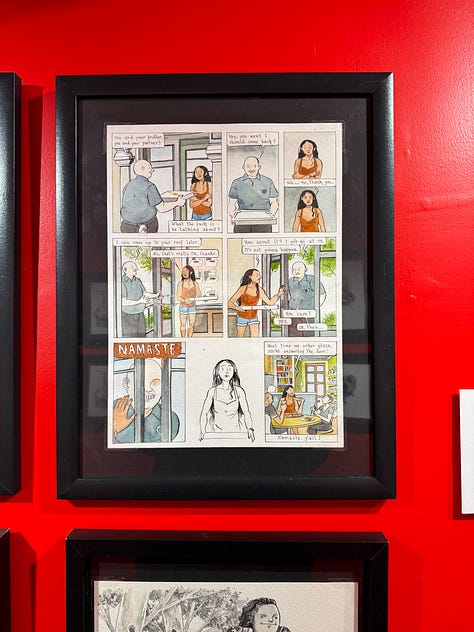

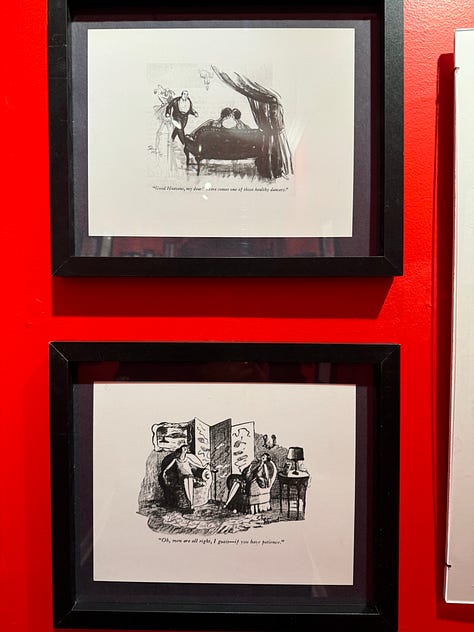
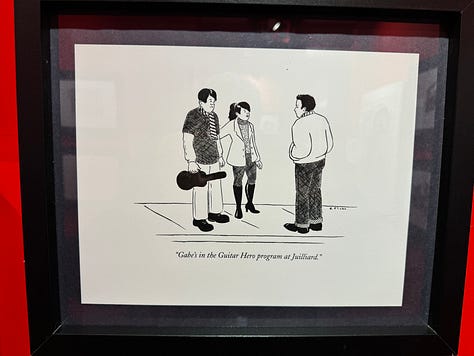
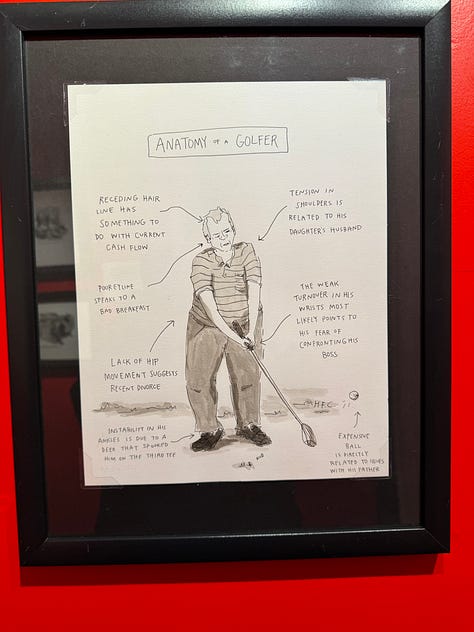

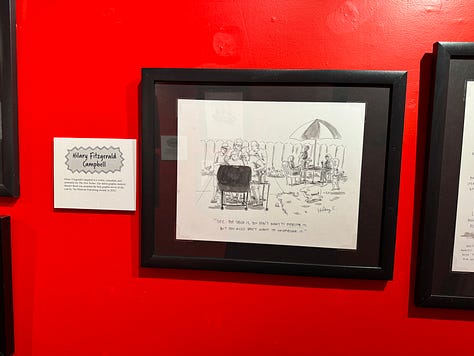

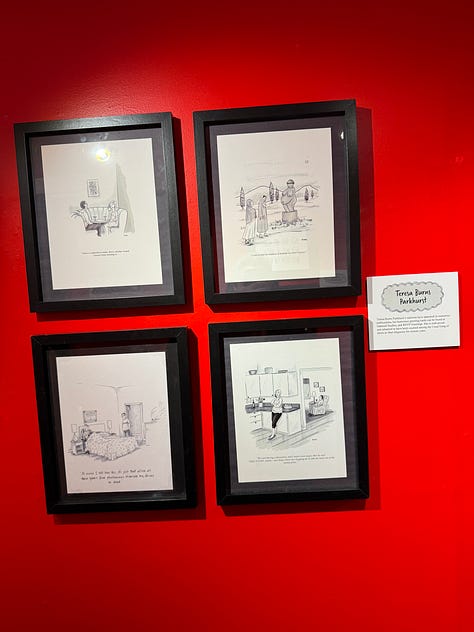

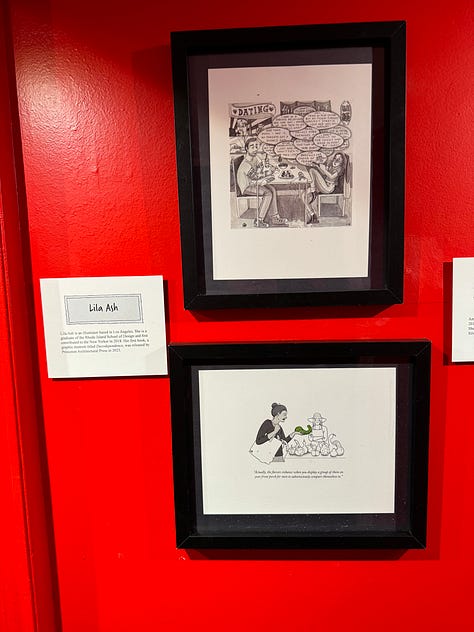
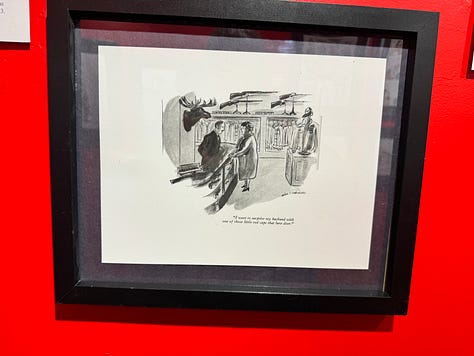
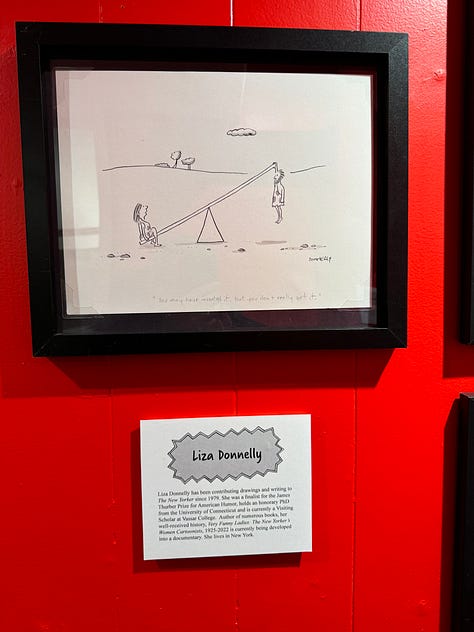
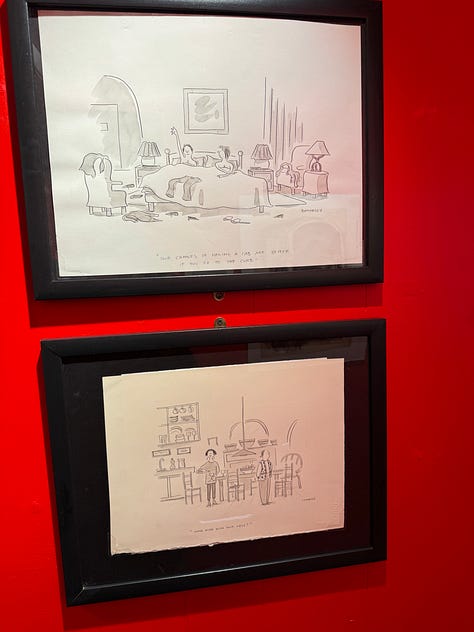
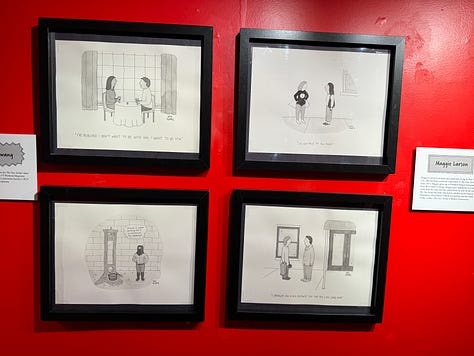







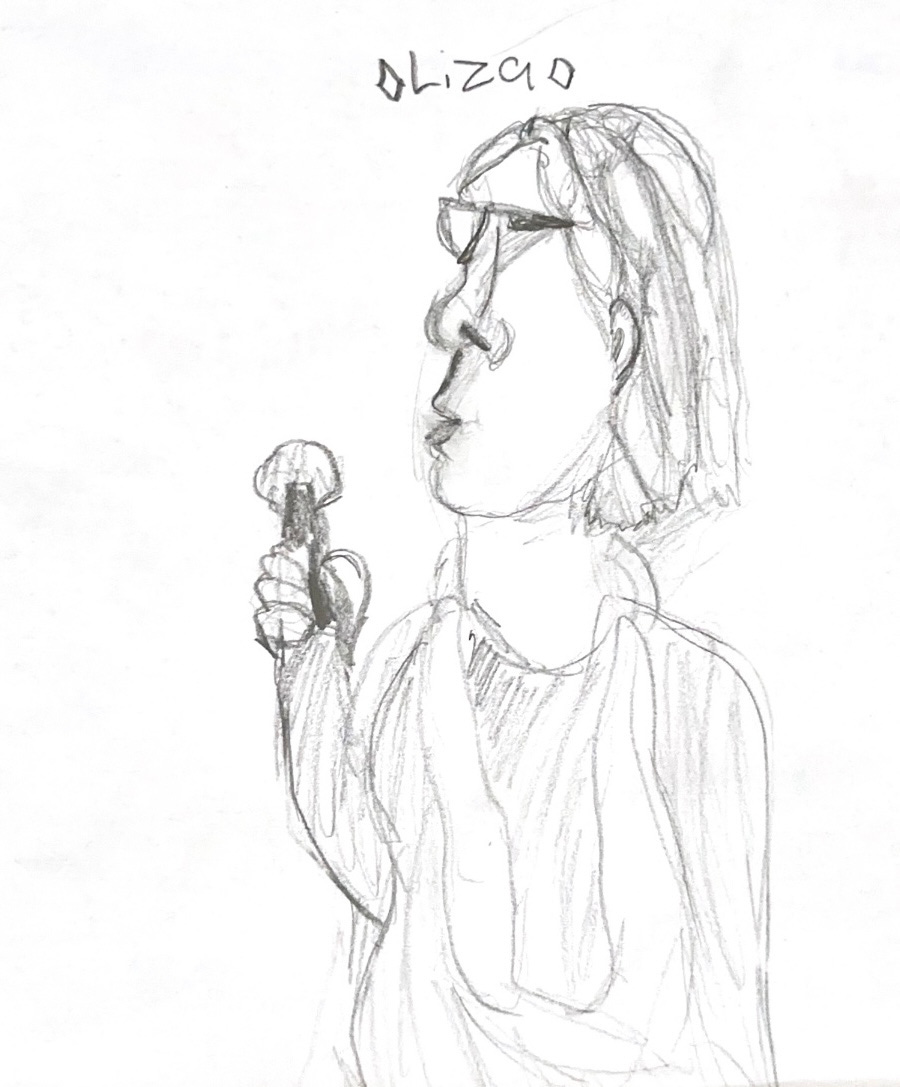
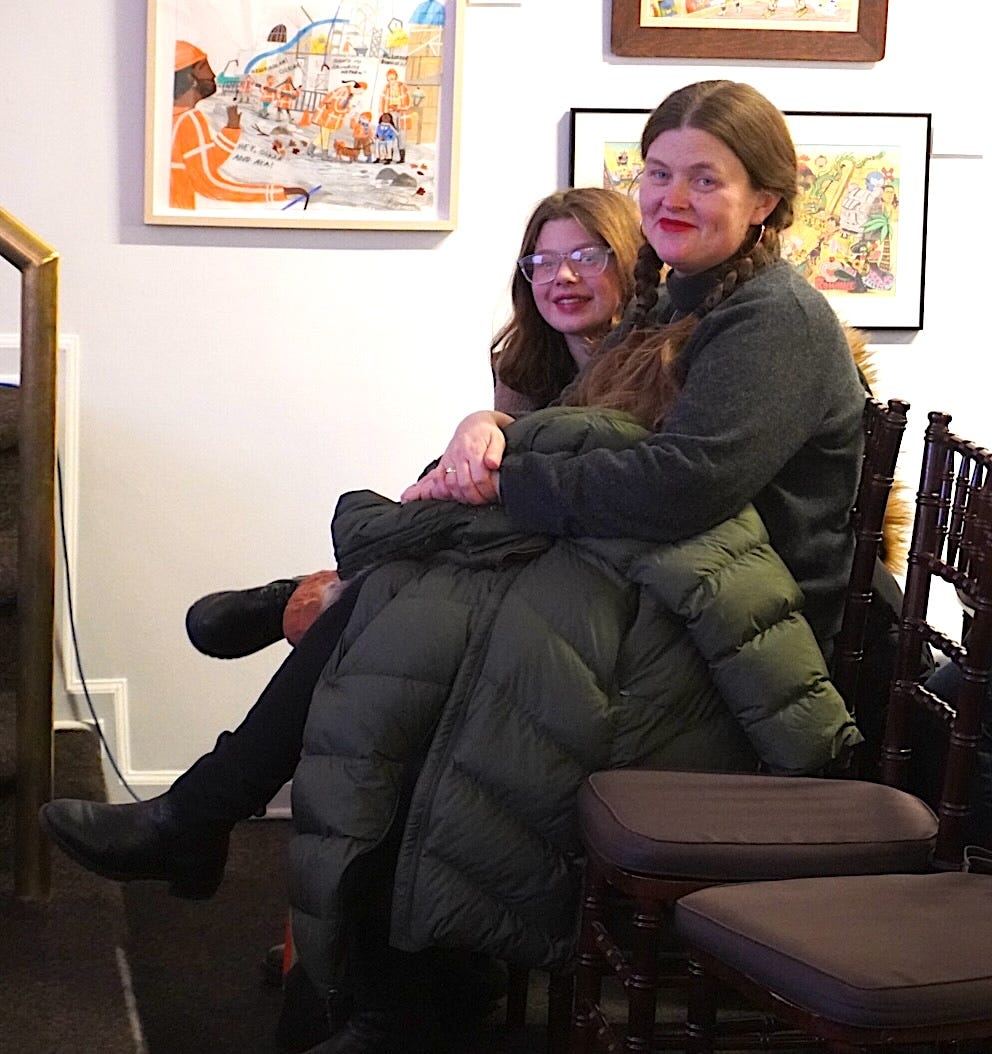
Love, love, love the cartoon. "Room of my own is in my head." Brilliant. So thrilled to see everyone at the exhibit. It's difficult to take care of all we, as women, need to take care of, AND be creative. Thank God I'm blessed in that I can do both; however, sometimes one or another of those things gets less attention than I'd like. It looks like a good time was had by all. Con-cats.
What a wonderful event! So happy to hear you were front and center. I'm sure it was an honor to part of wonderful women in the art of cartooning.